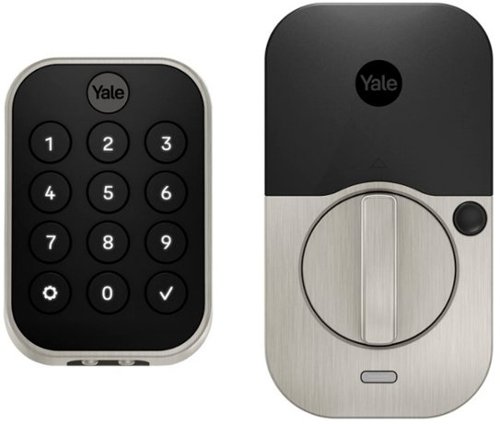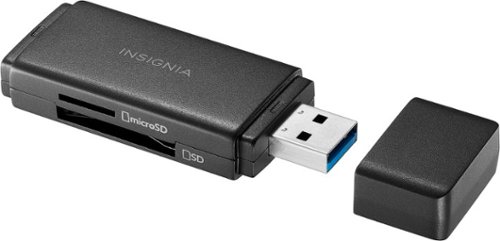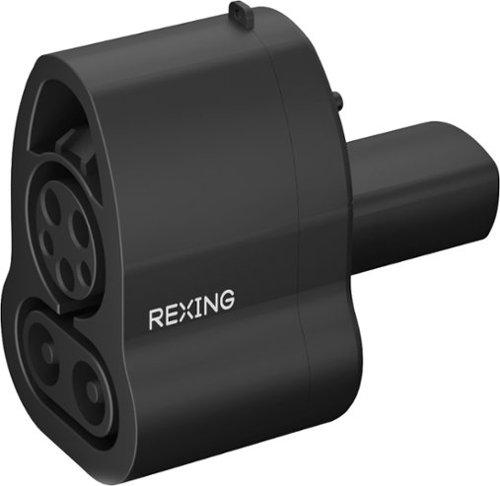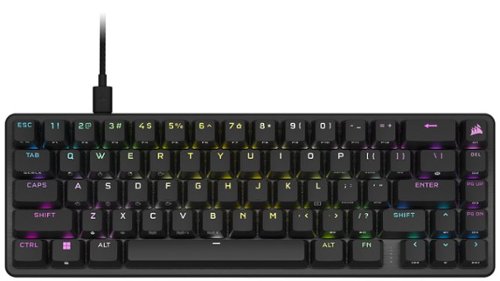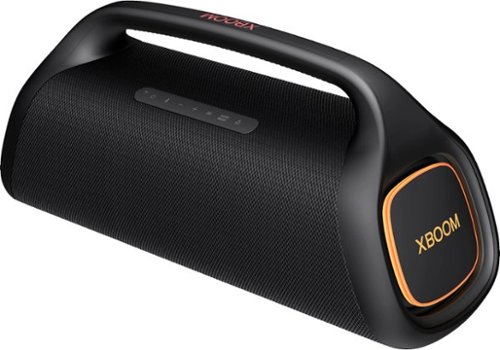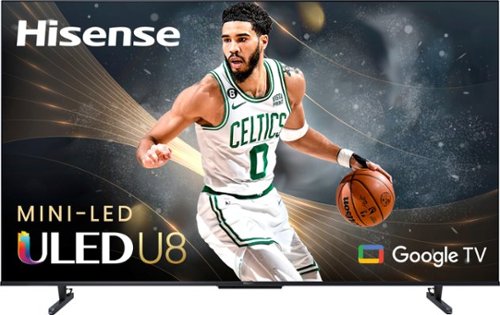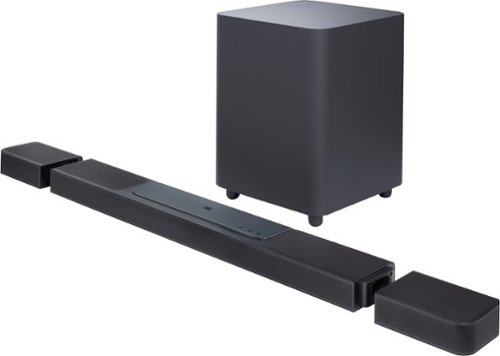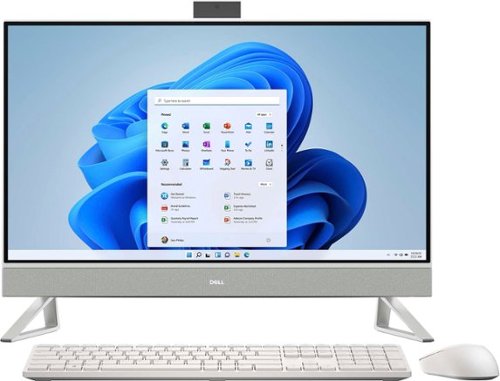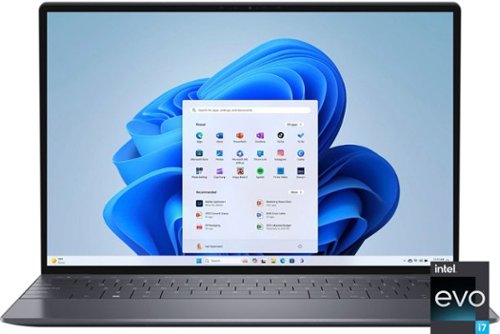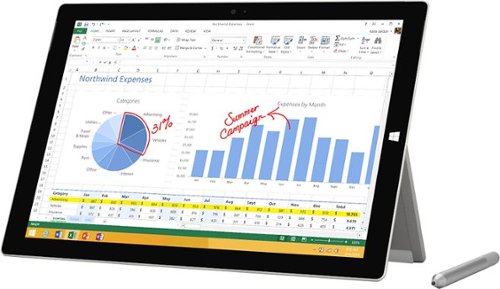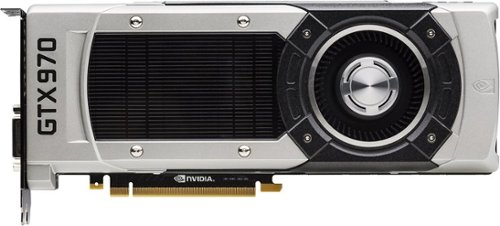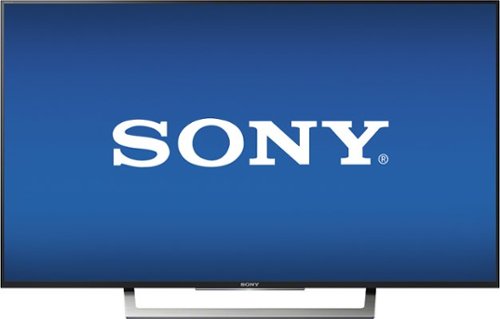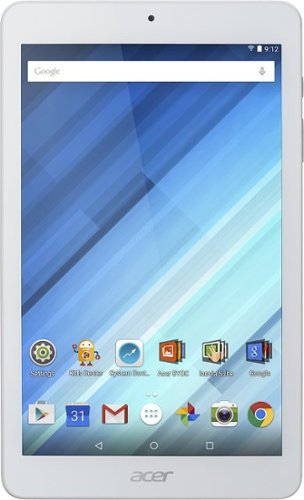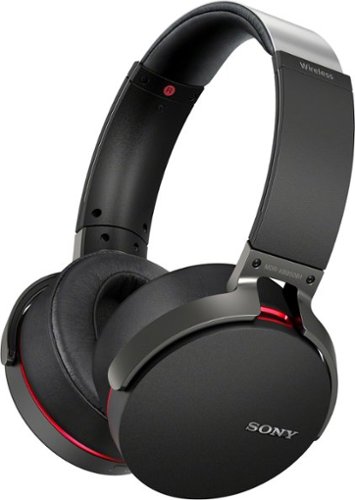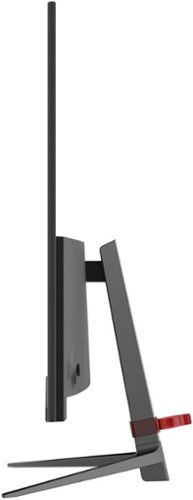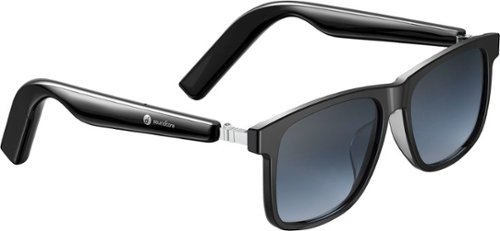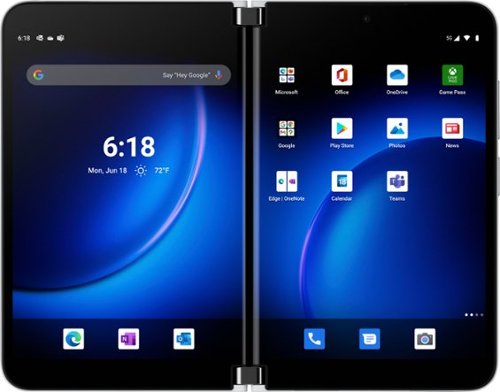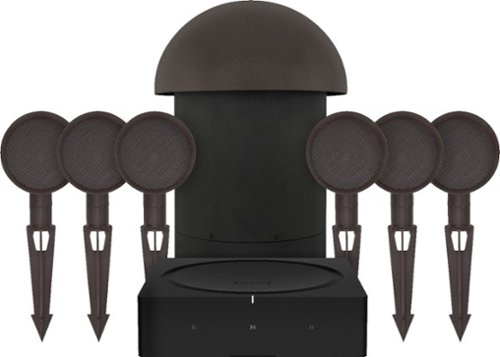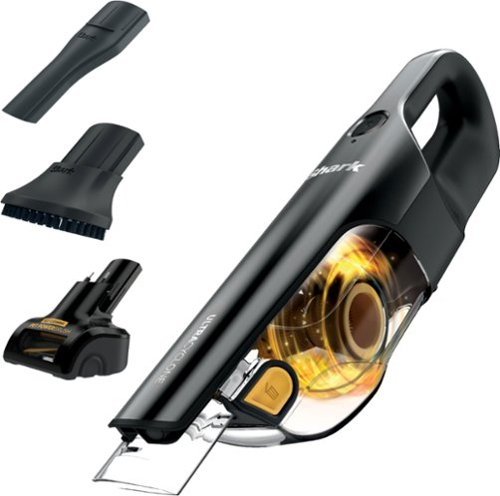aarondr's stats
- Review count184
- Helpfulness votes1,200
- First reviewOctober 22, 2014
- Last reviewApril 26, 2024
- Featured reviews0
- Average rating4.6
- Review comment count6
- Helpfulness votes10
- First review commentJuly 8, 2014
- Last review commentMarch 30, 2017
- Featured review comments0
Questions
- Question count0
- Helpfulness votes0
- First questionNone
- Last questionNone
- Featured questions0
- Answer count16
- Helpfulness votes31
- First answerJuly 8, 2014
- Last answerDecember 11, 2021
- Featured answers0
- Best answers4
You've got enough on your plate, let Yale get the door with the Yale Assure Lock 2. With multiple ways to unlock, the ability to easily share and track entry codes and advanced Auto-Lock with DoorSense, this Wi-Fi smart lock gives you one less thing to worry about. With built-in Wi-Fi, you can easily check in on home, from wherever you are.
Customer Rating

5
Great update with physical buttons
on September 20, 2023
Posted by: aarondr
Yale impressed me with the first generation of locks connected by August, so much so I purchased one for every deadbolt in the house. The new generation of Yale locks comes with their WiFi bridge, which means no August wall wart. However, Yale being owned by the same company as August meant this lock not only will setup and work with the Yale app, but more importantly - I was able to add this existing lock to my already existing August app/setup and integrate it just as neat and tidy.
First of all the Yale lock is a YRD430, which is an excellent lock with matte buttons as the keypad. It’s hard to verify, but I would assume these are PBT plastic to avoid the shiny and finger oil that ABS can pick up. I can tell you from experience, that after a couple of years, button keypad locks will show the locking code most used and fade, hopefully these buttons will last better than other locks I’ve had. The touchpad design of other Yale locks might be more durable long term, but it also shows fingerprints. The backlight is easy to see in all but direct sun, and has audible feedback to let you know when it’s active, and responding to a touch.
The Assurance Lock system from Yale is still present, but there are no voice prompts. Instead the app is suggested to change all lock settings. In fact you won’t even find the settings code anywhere but the app. The app allows you to program different lock codes for different people. The YRD430 is powered by 4 AA batteries which are included (Energizer even).
Physically the device is smaller and a bit deeper than the old module. The old lock stood it’s batteries upright in a row, while this lock has a chunkier throw side and larger throw as well. It doesn’t feel quite as sleek as the first generation, but then again it takes less vertical door space, which might have been a deterrent for some.
Interestingly Yale’s Assurance system has a modular slot where different modules, potentially different technologies can be supported. This was true on my old locks, and here it is with the same pin out and module format in the YRD430. While my previous locks had an August branded module that connects to the August bridge WiFi adapter, this lock includes a native WiFi adapter. Time will tell if the batteries last well enough, but again, AA Lithium batteries will probably extend the runtime significantly. Basic locking/unlocking and custom code generation can all occur via the app remotely, which is where most of your day to day use cases will be.
Smart wise, I had nothing but success with Alexa and the app locking, unlocking, and checking the status of the lock. You need to adjust some settings, but using my existing August connection I was able to add it. The operation is always fast, and reliable. Homekit I continue to have trouble with. I was able to get Homekit to recognize the device manually by entering the code on the printed sheet. My camera would not scan the small sticker and activate the device. Once activated it would show status, but for some reason not seem to function. Homekit for so many things has just never worked for me so I wouldn’t say it isn’t operator error.
If anyone is intimidated by installation of this lock, I would recommend spending a bit of time just tearing apart your existing deadbolt. Once you get past the first screws, the whole lock makes total sense mechanically, and you realize your door has basically a hole in it with a conduit to the doorframe that the deadbolt itself rests in. I’ve installed quite a few deadbolts over the years, and this was not difficult at all. I did have to replace the lock portion despite my Yale Assurance locks. The two locks have different alignment with the screws. I had to play with the strike plate just a bit, but honestly it just took a few minutes of adjusting and seems to be the norm when working on older doors. Activating the module and lock were a breeze and as I mentioned: if you don’t like the Yale app, just use the August app as it works with this lock and WiFi adapter as well.
Overall the YRD430 is an excellent deadbolt. I love the battery choice, the modular add in, and the smooth installation process - none of which has changed over the first generation. The WiFi module seems solid and the setup process was super solid. Alexa worked great once I set up the required voice code and enabled voice lock. Overall this lock is a huge win for me and a great upgrade to the first generation!
I would recommend this to a friend!


Whether you’re filming or taking photos, don’t run out of memory in the middle of a shoot. Transfer and back up files with the Insignia NS-CRSA1, USB 3.0 to SD and microSD Memory Card Reader. Simply plug in the card reader to your computer, tablet or other device with USB-A female connector to quickly transfer data. It’s backward compatible with USB 2.0 device and wide variety of SD and microSD cards to keep your creativity flowing without having to pause and delete unwanted files. Its compact design and protective cap mean you can easily fit it in a pocket or bag and not have to worry about damaging your connector. Never let a full memory card stop you again.
Customer Rating

5
Solid simple device that delivers on the 90 MB/sec
on September 14, 2023
Posted by: aarondr
Ok, so Insignia's SD/MicroSD card to USB adapter is a no frills piece of kit. You get a simple device, in a simple box, but it does exactly what it says on the tin. It is a truly fast USB-A 3.2 (5Gbps) device. It has a protective cap, but essentially that's the extent of the features besides two slits that fit either an SD or Micro SD card.
The box claims that the device can transfer up to 95 MB/sec. That's no lie! I have a Sandisk Ultra card that's rated for 100MB/s+ that I use for my Sony mirrorless camera. Taking 4K video needs high performance cards, so I have one. I was able to transfer a 20GB video in minutes - peaking at 93 MB/sec, but sustained over 90MB/sec the entire time. That's delivering on a essentially the only core feature this product claims: fast transfer from your removable media.
The device's form factor could be better. Having SD card stick out from the side instead of just extending the length of the device means that it could interfere with other ports or devices on a laptop or the back of a crowded desktop. Perhaps a short cable or dongle style might have been preferred for some. That said, if you want to just throw it in your camera bag and go, this is a great form factor and device. The protective cover keeps the USB port out of trouble and essentially will fit securely in your bag.
Overall - there's not much to say other than this device delivers! With so many card readers on laptops only delivering USB 2.0 speeds, it's nice to have a USB SD card reader that actually transfers at it's promised rate. Recommended!!
I would recommend this to a friend!

PRO X TKL is the next generation of the Logitech G PRO keyboard. It was designed in collaboration with the world’s best esports players—and engineered to win. PRO X TKL helps players eliminate every barrier between them and the win with the speed and reliability of LIGHTSPEED wireless technology and a sleek, tenkeyless design. It’s been battle-tested, pro-approved, and built to win championships at the highest levels of competition.
Customer Rating

5
The BEST wireless mechanical keyboard.
on September 14, 2023
Posted by: aarondr
Logitech has long been one of my favorite manufacturers. I’ve been using their mice and keyboards since before the start of this century. While Logitech has had great gaming keyboards and great accessories over the years, they did fall into a gimmicky period. The PRO X series is anything but - pushing minimalist designs and top notch build quality with a focus on the essentials. The PRO X TKL Wireless is the epitome of this sporting Lightspeed wireless, per key assignments and macros for the F-row, a soft touch volume bar, and PBT keycaps. There are no extraneous buttons, displays, extra lighting. There’s a focus to the Pro X series, and it shows.
Like many newer products, you’ll find the packaging minimal, cardboard, and clean. Opening this box up reveals a surprise: a hard shell nylon carry case. This case has a nice handle for lugging this between locations and perfectly fits the keyboard, cable, and receiver with some space to spare below the keyboard. I love this feature, as so many times we’re told these peripherals are for professions (who do travel with their input devices), and this is the first time I’ve seen a keyboard with a carry case included. Opening up the carry case you’ll find the keyboard, USB-A to USB-C cable, warranty pamphlets, and the Lightspeed receiver.
The keyboard itself is an aluminum backplate wrapped in ABS plastic. The casing is strong with no flex, and has enough weight that it feels solid and in place without being too weighty. It’s a perfect TKL (Ten-KeyLess) form-factor, taking up under 14” of width. TKL sizes mean that you get most of the keyboard, but your mousing area is a lot closer - which is both ergonomic and convenient. Unless you’re addicted to a number pad, I recommend everyone from gamers to office workers use TKL’s these days.
The USB-C charge port is located on the back left side, while the power switch is located on the back right side. The keyboard comes partially charged, but like most consumer electronics, it’s recommended to charge up before use. Curling around back on the right side you find the volume bar. This soft touch free flowing volume bar is great for making large or minor adjustments. Above the main keyboard are a selection of round, low profile buttons. From left to right you have Lightspeed connection, Bluetooth connection, game mode, and brightness/lighting buttons. There is also a set of media controls near the volume bar for previous, play/pause, next, and mute. Beyond those, the rest are normal 87 TKL keys.
Moving to the keys, these are double-shot backlit PBT keycaps. It’s taking almost a decade, but what was once bespoke is now finally mainstream. PBT keycaps offer amazing durability, and don’t get shiny under your fingers like ABS plastic keys do. Their sheer durability and resistance to wear make this keyboard a long player. One of the first things I did with my old Pro X (non-wireless) was replace its keycaps with PBT, so it’s nice to see it from the factory like this. The choice in font, and location of the print are both well chosen. The font is thick and generous on the eyes. The backlights project near the top of the keys, and the printing is aligned appropriately to get the most out of this lighting. The layout is quite standard and let me, with the slick action of the keys, achieve my normal 75 wpm easily without errors.
Speaking of keys, the Pro X TKL Wireless offers a choice of switch. My Nirvana is exactly this keyboard configuration: PBT, TKL, and Brown switches. Brown switches offer a tactile bump near the top of the actuation point to give you a slight feedback that you’ve hit the key without having to bottom the key out. They don’t have the boisterous click of the ‘blue’ keys, but do offer some feedback unlike ‘red’ keys. Due to the fact that I type more than I game, I find the brown keys to be a perfect balance of functionality and smoothness for gaming. Some may argue that reds are better for gaming, but my preference has always been brown keys.
The battery life is excellent. In fact in the past two weeks I’ve not needed to charge the keyboard once. The backlight has been on when using and I’m still at 63% with daily use. This is truly a keyboard that only needs to charge about once a month. The included receiver paired up and immediately adopted my Pro X mouse, meaning I can keep a single cable on the desk for charging. I was skeptical of wireless keyboards in the past, as it’s really just one wire, but honestly, after having a super clean workspace with no wires, I don’t want to go back. It’s just very clean.
The Logitech G Hub software has come a long way. It’s also quite minimal and lists your components in a well labeled and iconified list. There are two modes to select for the keyboard: on board memory, and G Hub connected. The amount of options and tweaks are more open on software enabled mode, but you can use the software to configure a hardware profile (basic lighting effects and macro assignments). On software mode there are a lot more lighting choices, including all of Logitech’s signature effects like Ocean Wave, and Ripple. The assignments are pretty helpful, and even include sound effects if you really want to include some wacky sounds for your streaming adventures. Unfortunately only the F keys can be assigned functions. I’d still like to see Caps lock remappable, as who uses it anyways? That said, the software is solid, stable, and a lot better than initial release a couple years back. I still love that I can see the power consumption of individual functions and get an estimate of battery life. Want to know exactly how much juice the backlight is taking up? It will tell you! I feel like they’ve hit their vision with the software - not quite as in your face as other manufacturers, but subtle, professional, and solid. I’ve started to really transition to Logitech accessories away from competitors since the software experience is simple, clean, and informative.
Overall I’m quite impressed with the PRO X TKL Wireless. Logitech’s Pro X series is a godsend of solid, functional, practical, with just the right amount of creature comfort devices. Logitech finding a good manufacturer of cherry mx clones was a huge improvement over the in house Romer-G switches of last decade. I’m a huge fan of the direction Logitech has been going and I think you should be too. While some nerds will recommend their bespoke manufacturer of choice, I’ll say I’ll hop on the engineering of Logitech any day of the week when it comes to longevity and support. Highly recommended.
I would recommend this to a friend!



Expanded your charging network by accessing over 5,000 CCS fast charging stations nationwide with the Rexing CCS to Tesla Adapter. Quickly charge your Tesla at level 3 fast charging stations with up to 250 kW or 250 A speeds (charging speed depends on car battery status and DC charger specifications). Designed for CCS-enabled Tesla vehicles.
Customer Rating

5
Solid CCS Adapter, but chargers are a crapshoot
on September 11, 2023
Posted by: aarondr
The Rexing CCS Tesla adapter allows you to use CCS v1 chargers to fast charge your Tesla vehicle. CCS was identified as a standard here in the United States as opposed to the Tesla plug (now named the NACS) which is the defacto standard amongst due to the simple market share of Tesla. The thing is, a lot of money has gone into CCS chargers around the country, and sometimes they are the only chargers available. This adapter, allows you to use these CCS chargers with your equip Tesla vehicle. NOTE: Cars older than mid-2019 may require a retro fit kit from Tesla which already includes a CCS adapter. You can check your CCS support in the Software Update 'Additional Vehicle Information' screen under 'CCS adapter support' (Installed means you can use it, Not Installed means you need a retrofit).
So assuming you have CCS support on your Tesla, inconveniently Tesla does not include an adapter. They will sell you one but you can opt for a unit like the Rexing, which essentially supports the same standard and power, but you can purchase from Best Buy. That said, the Rexing and Tesla adapter look and function identically - with the same power rating (250 kW).
Despite its rating, I was only able to charge at 78kW at one Chargepoint charger. EvGO offered chargers locally too, but maxed out at 60kW. It's hard to find high capacity CCS chargers that will output reliably to an adapter. I don't blame the adapter as much as I do the CCS chargers. One downside of venturing outside the Super Charger network is the reliability of stations. Despite this, the adapter worked well and I was able to add quite a bit of charge in 10 minutes. DC Charging is much faster than AC Level 2 charging.
With the future of CCS looking dim, given the plethora of manufacturers going all in on NACS, an adapter like this makes sense if you road trip and like having the flexibility of choosing what charger you want to stop at beyond the super charger stations. I used this once because on a road trip there was a CCS closer to where my friends were vs the supercharger station. If you're a casual road tripper, or just drive locally I'd pass on an adapter like this. Overall, the Rexing unit is just as easy to use as any other CCS adapter I've looked at and appears to be high quality.
I would recommend this to a friend!
Pro-player performance comes in a space-saving 65% size with the K65 PRO MINI 65% optical gaming keyboard. Smooth, ultra-responsive linear CORSAIR OPX optical switches combine with extremely satisfying acoustics, engineered with two layers of dampening, for a gaming and typing experience that lets you focus on what really matters: the game. Outlast the competition as you type on tough PBT double-shot keycaps that won’t crack under pressure, and astonish opponents with AXON Hyper Processing Technology that plays complex RGB lighting layers and transmits keystrokes in an instant. With expansive secondary functions and onboard macro recording, the K65 PRO MINI equips you to always play with a purpose
Customer Rating

5
Great 65% layout with PBT and solid construction
on July 25, 2023
Posted by: aarondr
Corsair’s latest 65% keyboard is a mainstream entry into a niche product category. 65% keyboards offer one of the most compact possible layouts that eschews function keys, but retains many other keys in a compact layout. The K65 Mini sports their new signature OPX keys. First featured on the K100 OPX keyboard, the optical switches found in Corsair’s K65 offer over 150 million (yes million) keystrokes per key. That combined with their linear actuation point, they offer an ultrafast actuation and zero debounce. This isn’t my first keyboard with these keys, but it is the first sporting PBT keycaps, which are a huge addition to this keyboard.
First of all, like most Corsair products, this one comes in a nice yellow box. It’s a highly recyclable box with almost no packing waste, so that’s a plus. Inside you’ll find the keyboard and a USB-C to USB-A cable. A second more ornate space bar is found, wrapped like a cheese stick. Unfortunately there are no USB ports on this keyboard, but given the minimal layout, it would be hard to have them.
As far as the keyboard goes, we have Corsair’s excellent lighting, their penchant for using aluminum casings, and fairly new for Corsair: PBT keycaps. PBT is a polymer that offers a lot of resistance to the shine you see on ABS keycaps. The keyboard layout is a standard layout despite being smaller, so replacement caps are easily found. The OPX keys have standard cherry mounts, so pretty much any set will work if you choose to replace them. The keyboard has an excellent weight (623g to be exact) to it and the aluminum dampening plate makes flex non-existent and gives the keyboard a sturdy and premium feel.
The layout is slightly more than a 60% - offering dedicated arrow keys, as well as Del/PgUp/PgDown. Modifiers through the Fn key will light on press. The number row offers the F1-F12 keys. Home/Insert/Pause/End all hide on the far right keys. There is an interesting set with the WASD to offer mouse movement and clicking, which is surprisingly fun. Arrow keys modifiers allow volume and media functions as well as some basic keyboard functions like brightness and lighting.
The board sports a pretty extensive macro setup. There are dedicated macro keys, and a macro recorder built into the hardware. iCue continues to offer one of the best interfaces for customizing your keyboard and creating those macros. There is 8MB of storage - enough for 50 hardware profiles, including key assignments and lighting profiles. This keyboard is meant to be customized, and then potentially took to tournaments or lan parties.
So what are the OPX switches like? They feel like Cherry MX Red’s with a shorter actuation point. To the point that you have to be careful when depressing or even resting your finders on the keys. For gaming it’s extremely responsive. For typing it takes some getting used to. I found I could easily hit my 75 WPM typing speed with a bit of adjustment. I play Starcraft 2 and found the ability to spam on this quite high - I did however miss my F keys (I love F2 too much). Again, there is a learning curve if you’re not overly used to Red style keys. CS:GO I found the adjustment was easier. Cyberpunk 2077 was playable and I found the macros quite helpful.
Corsair’s software allows you to tweak the keyboard to your delight. In iCUE 5 you can create lighting profiles, sync with other profiles, re-assign keys, and disable certain key functions (like the windows key or alt+tab). iCue also allows you to adjust important settings like layout and polling rate. This keyboard by the way supports a polling rate of up to 8000hz, which isn’t enabled by default. 1000Hz should be plenty for all but the most competitive gamer, and keeps CPU utilization to a minimum, but it’s there if you decide you need it.
Besides the excellent software, there are multiple lighting effects built into the keyboard. These are cool because they don’t require iCUE. You get built in effects that can be customized and programmed into the keyboard. Some may find the Type Lighting to be cool, but honestly being able to set a static backup color for the backlight and program is a good fallback as opposed to the RGB throw up that used to be the default. I’m a huge fan of the watercolor and murals - new in iCue 5.
Corsair has another winner here in my book. The addition of PBT keycaps on their latest Pro keyboards is a god-send for durability and longevity. The build quality of the keyboard itself is top notch and the keys are quite satisfying to type on. Beyond gaming I actually found this keyboard to be great for programming, as the dedicated arrow keys and integrated Fn Mouse movement meant I rarely had to leave home row. The extremely small form factor continues to be an ergonomic boon - keeping your mouse much closer than you’d get if you had a full keyboard. A TKL layout might be best for many, but if you like the minimal size - the K65 Mini Pro is a great keyboard.
I would recommend this to a friend!
Superb sound meets brilliant stage lighting, for a multisensory experience you can take anywhere, with up to 30 hours of battery life,¹ plus IP67 rated dust and water resistance.² Savor our most powerful high-quality speaker sound as the compression horn tweeter produces dynamic sound and the 4.5-inch woofer brings the bass to life. Plus it has a stage lighting that puts a vibrant lightshow on the wall to get the party started.³
Customer Rating

5
Great portable, strong, bass heavy speaker
on July 21, 2023
Posted by: aarondr
LG isn’t necessarily the first name you think of when it comes to bluetooth speakers. However the LG XBoom Go XG9 is a powerful and portable Bluetooth speaker that delivers crystal-clear sound with deep bass using dual passive radiators that are both colorful and quite effective. It would definitely be home in parties or on your front porch. With its IPX5 water resistance rating it’s safe by the pool or beach. The LG XBoom Go XG9 even doubles as a speakerphone with a built-in microphone. Overall in the crowded bluetooth speaker market, does the XG9 have enough to make it worth your money?
First impressions of the XBoom are praiseworthy. The unit is well boxed and easy to get started with. Interestingly this is the first and only bluetooth speaker that came with the marketing sticker to put on the unit (which lets be real, does anyone like these flimsy advertisements on their device?). The unit self has a nice handle that makes grabbing it easy.
First impressions of the XBoom are praiseworthy. The unit is well boxed and easy to get started with. Interestingly this is the first and only bluetooth speaker that came with the marketing sticker to put on the unit (which lets be real, does anyone like these flimsy advertisements on their device?). The unit self has a nice handle that makes grabbing it easy.
Unboxing, you find a fairly large 110w power supply. It’s 19v at 5.8amps, which put it in the same class as fairly powerful laptop power supplies. Obviously this should charge the LG Xboom XG9 fairly quickly. I plugged it in day one and let it charge up to 100%... that’s the last time I’ve used the power supply this entire week. Despite hours of playback in multiple scenes, a pool party, entertaining my kids, and quite a bit of personal listening it’s still touting 60% battery. The large nearly 6000 mAh battery really packs a punch. Perhaps the rated 24 hours of battery is an underestimate as I’ve had at least 13 hours of use at relatively loud listening levels.
Setting up is easy. You pair it with your phone (as it shows up at LG-XG9Q) and it immediately suggests grabbing the app from the AppStore. Definitely do, as this gives you more control over lighting and many other features. The drama free setup led into drama free usage. Connection was strong over the 20 meter radius I walked around outside. I didn’t try too much further, but the connection seems quite strong.
The sound is excellent. You get 2 4.5” woofers (round I believe) and a 1” tweeter obscured by the fabric cover. You might think that means this is a boring looking speaker, but it’s anything but. Two passive radiators adorn each end of the XG9. They’re highlighted by LED lighting making them stand out as they bang out to the bass. They aren’t just aesthetic, as the advantage of this speaker configuration is great bass performance. The radiator isn’t driven, but rather reverberates in a resonance with the enclosure and active drivers. This means volumetrically the speaker can produce bass a lot louder than you’d expect from 4.5” drivers. I found the sound to be sublime for party music. While this is no critical listening speaker, it does deliver on its target market. You get powerful bass, solid mids, and clear highs on the front side of the speaker. Highs are muted on the backside, but you can still enjoy music.
The XG9 features even more RGB lighting besides the radiator highlights. You also get stage lighting, which can provide some ambient lighting for a party. You can optionally sync it with the music and the radiator lights. This is all configurable in the app. You can turn the lighting on and off by using the light button. The light is quite bright and it comes with a warning not to look directly at the light. Most of the time I disabled this light, but the app makes it easy to control. I do wish the app let me set any color I wanted, but instead it gives predefined themes.
Speaking of buttons, beyond control via the app, you get power, bluetooth, volume up/down, play/pause, sound boost, and lighting. Most features are self explanatory, but the sound boost - which serves basically as loudness - makes the speaker come alive. In most scenarios you’ll find it adds a presence that you won’t get with it off. You get a more flat frequency response with it off, but you lose the deep bass that brings the party. I’d probably only turn this off if I was listening to a youtube video, podcast, or some other talking head content.
Physically this speaker resembles a boombox of yore. You have a nice handle. The unit is wrapped in dark fabric that cleans up nicely. At the pool party I took this to, some kid dropped a cupcake on the XG9. A little bit of water and scrubbing with a soft bristle brush had the speaker looking like new. The unit is a bit heavy for some at 16lbs. That huge battery adds some heft, but the handle makes lugging it around fairly easy. I was delighted about how easy it was to set the unit down and how the rubber feet seemed to make it super easy to reposition without damaging the unit or surface I was placing it on. Hiding in the waterproof rubber seal on the back you’ll find a 2amp USB port for charging devices, which is a nice touch. You also find an auxiliary in 3.5mm jack.
Overall, the XG9 was a great addition to my family’s arsenal of good time summer devices. I’ve had a few different bluetooth speakers, and the XG9 just sounds effortless, is plenty loud, and offers fun, but unobtrusive and defeatable lighting. The passive radiators are fun and functional and overall the speaker is an excellent package for the pool, beach, or indoor party.
I would recommend this to a friend!




The Award-winning Hisense U8 Series Mini-LED TV just got even better. With Peak Brightness 1500 and more than double the local dimming zones as last year, along with Quantum Dot Color, Dolby Vision HDR, and Low Reflecton panel technology, the U8 delivers unmatched brightness, contrast and detail. And, with Dolby Atmos and an upgraded 50w 2.1.2 multi-channel audio system, the U8 creates an immersive cinema experience in your home. In additon, the U8 is compatible with the new Wifi 6E router protocol and includes a NEXTGEN TV ATSC 3.0 tuner making the U8 virtually future-proof. With the Google TV OS and Hands-Free Voice Control, searching for and playing all your favorite content is simple and seamless. Just say “Hey Google”. The U8 also got more upgrades for the gaming enthusiast including a 144Hz VRR panel, Dolby Vision Gaming and FreeSync Premium Pro for an enhanced gaming experience. And, be2er also just got bigger with the U8H now available in an 85” screen size.
Customer Rating

5
Great bright competitor to OLED
on July 16, 2023
Posted by: aarondr
Hisense has become the brand that brings the latest and greatest tech on a budget. Their dual matrix 9 series last year was an amazing high tech entry to the market. This year’s 8 series, the H8K brings an extreme amount of zones to bear using the Mini-LED backlight along with ULED panel to produce an exciting product. Is it enough to take on OLED displays? I’d say definitely.
The 75” H8K TV is large and heavy (81.4lbs w/ stand); which is to be expected for a 75” FALD Mini-led panel. Perhaps a bit unfortunately named in the era of 8K tv’s, the H8K is only 4K, but it’s a well rounded player in the 4K realm. Not only do you get over 1000 zones (actual count I could not determine, but good sources say the 65” has 1008 zones, and the 75” would have even more), but you get a slew of other high end features. A native 144Hz refresh rate matches the best gaming monitors, VRR ensures a fluid framerate on gaming consoles and computers (Freesync Premium Pro and G Sync compatibility), ATSC 3.0 gives you 4K over the air TV broadcasts, built in Dolby Atmos 2.1.2 speakers sport great sound, and a pretty snazzy built in smart TV platform round out a pretty complete offering. The TV is quite featureful, and it should be at Hisense’s next top spot.
The physical design is a lot of textured plastic with some metal framing. The bezel is quite thin, with a minimal chin at the bottom sporting the Hisense logo. There is a single LED that shows power status (on is off, off is on). Around back you find the 4 HDMI inputs with 3 & 4 being HDMI 2.1 (sporting all the way up to the 144Hz VRR 4K HDR resolution). The other two ports only offer 4K 60Hz. There is the ATSC tuner port, AV in (composite w/ audio - cable not included), headphone out, serial port, LAN port, the antiqued optical audio, and a couple USB ports. The power cable is a full 3 prong standard equipment power cable (like for a computer). One very interesting thing about the physical design is the subwoofer grill, which is rightfully labeled ‘subwoofer’, centered in the back of the panel. Along each side you’ll find the height channels that are side firing, and the bottom includes the forward facing speakers making a 2.1.2 Dolby Atmos system. The remote includes shortcuts for Netflex, Amazon, Youtube, Disney+, Tubi and a generic apps button. Beyond that you get basic functionality with a direction pad, and basic function keys. The remote enables google assistant functionality.
That’s a good segway into the smarts of the TV: Google TV, formerly Android TV. Google TV has long been Google’s Smart TV platform, competing with Apple/LG/Samsung for the living room space. Overall Google TV has come a long way from the slow sluggish performance many of us early adopters were used to. The 2019 series I had before was almost unusable. Here things are snappy. Specs I could find were 2GB of RAM, 18GB of internal storage (16 available), a Mali-G52 GPU which hints at a Mediatek Helio G80 or similar CPU. Google TV offers a vast app store with Google Play, and great support for Google’s ecosystem. YouTube and YouTube Music are great, as is the Prime Video, Disney Plus, Hulu and Max apps. Overall, I feel like Android TV has made it. Overall I’m happy with the performance, which is leaps and bounds better than my 2021 Hisense Google TV. Another performance characteristic is start up time. From button press to picture is only about 2 seconds which is fast on a modern TV.
So what does the TV sound like? Better than some cheap soundbars. The subwoofer works, and well. It adds a depth that you wouldn’t find from a simple 2.0 soundbar. The built-in speakers are clear and sound great considering they're the built in speakers. The Atmos speakers do make a difference, and the virtual sound is good, at least in Standard mode (Intelligent mode sounded a bit hollow for whatever reason). There is even a built in equalizer with 7 bands of adjustment. Overall you almost don’t even need to get a soundbar depending on your needs, which is a big statement from me - who has a soundbar on EVERY TV in my home.
If you decide to use a soundbar, you’ll be pleased to find eARC with full Dolby Atmos/DTS:X output. I hooked up a JBL soundbar that had Atmos support and it worked perfectly with the TV passing multiple audio outputs (Dolby, DTS, Dolby Digital Plus, Dolby Atmos) directly to the soundbar. Audio wise, this TV has lots of flexibility.
So picture wise. For a TV listed with a peak brightness of 1500 nits, I was surprised how dim it seemed at first. Digging in picture settings, I found the ambient light sensor setting seemed to cause this issue, and changing its sensitivity, or in my case, turning it off altogether, was the right call. The U8K has a gorgeous vibrant panel that gets extremely bright. The TV sports an IPS panel with mini LED backlight. This combination creates gorgeous colors and erases most of the downsides of the IPS panel type. There is the tiniest bit of glow discernable when in high contrast scenarios (white text on black screen) near an edge. A bit of blooming/glow occurs, but it’s only perceptible in extremely dark contexts. If you’re using this TV in a living room, even at night, it will impress with its black levels, and more.
I found the Theater Day picture mode to be my favorite when not viewing HDR content. The Dolby Vision IQ setting was good when watching Dolby Vision. Color out of the box was great, and I didn’t feel like I needed to tweak the color values much at all to be true. YMMV, but other than dialing in the right brightness, I found the TV picture required very little tweaking.
My PS5 is able to exploit both VRR (Variable Refresh Rate), and 120Hz. Gaming in 120Hz is a changer for sure. You notice how smooth the action is. Especially on the PS5, VRR gives you that smooth motion, even when the PS5 can’t quite keep up. Avoiding tearing was PC gaming’s issue for a long time (as frame rates were so variable). I hooked up my Nvidia laptop and was able to confirm G-Sync compatibility as well. The VRR on this monitor lists from 48-144Hz.
I tried the ATSC 3.0 tuner, and it found one Nextgen station. Unfortunately I couldn’t get it to tune in solidly enough to view, but I was able to view about 25 other channels in my area. The tuner was fast and worked well.
So how does this compare to an OLED? Again, the darkest scenes do allow some glow in, but it’s not noticeable unless it's really dark in your room. The peak brightness makes OLEDs just look dim in comparison. I noticed no obvious blooming in dark starfield scenes, with only glow being a problem near the edges of the TV.
In conclusion, I would have preferred to see every port HDMI 2.1, but other than that, I was extremely impressed with this TV. You get all the modern goodies (VRR, 144Hz 4K, Mini-LED) and amazing contrast. Sound is great for built-in speakers. Overall this is an amazing TV.
I would recommend this to a friend!



The ultimate 3D surround experience that will blow you away. You’ve never heard anything like the JBL BAR 1300X—in your living room or anywhere else. More than just a great soundbar, it’s a full sound system. It features MultiBeam and six up-firing drivers—four in the bar and two in the detachable battery-powered surround speakers—that deliver massive Dolby Atmos and DTS:X 3D surround sound, centering you in your music, movies, and games. 1170W of total output power and thrilling bass from a 12” subwoofer is more than enough to make the room shake. Though, you’ll never miss a word with due to our PureVoice technology, which makes sure the dialogue is clear even when other sounds are at their loudest. When you want to enjoy your favorite tunes choose streaming via either AirPlay, Alexa Multiroom Music (MRM), or Chromecast built-in that give you over 300 music streaming options. But that’s not all. Your choices are as unlimited as you are because you can also pair the soundbar to your Bluetooth device. You can even take one of the detachable speakers (or both for powerful stereo sound) out to your kitchen or patio and enjoy listening to your favorite music or podcast there.
Customer Rating

5
Powerful, flexible, and great Atmos support
on July 13, 2023
Posted by: aarondr
Remember the 90s? TV’s were big, speakers were big, and surround was a pipedream of the rich. Early 00’s speakers got smaller, and subwoofers became a thing. Surround sound became possible on a budget and simple soundbars became a thing. They were a curiosity, and a compromise for husbands trying to make their wives happy in the family room. Soundbars have come a long way in the past 20 years though, and the 1300X is an impressive, flexible, and powerful example of multi-channeled 3D surround sound, far from compromise. Can you really achieve a fully Dolby Atmos 11.1.4 setup that rivals separates though?
The JBL 1300X soundbar comes in a sturdy, and oddly shaped cardboard box. It is adorned with information about the soundbar, including its features and specifications boasting about multi-channel capabilities. Inside the box, you'll find the soundbar itself, subwoofer, surrounds, a remote control, an HDMI cable (highspeed 48gb) and quickstart guide. The soundbar is well-protected by foam inserts in the box. Overall, the packaging for the JBL 1300X soundbar is high-quality and does a good job of protecting the product during shipping and arrived to me unharmed.
Setting up the soundbar wasn’t difficult. The quickstart guide shows you how to get the surrounds charging on the soundbar itself. They connect magnetically to either side of the soundbar, making its overall length 54”. The main soundbar is 39/40” (magnetic caps that help the presentation add just a tiny bit of length). The soundbar is deep too, at 5.7”, as housing all those directional elements necessary for the 11.1.4 Atmos requires real estate. The included HDMI cable is great for the eARC setup - which I learned the hard way. Technically this is the only cable (other than power of course, which is a standard AC power cord) that’s necessary to hook up. Out back on the soundbar, you might be surprised by the plethora of HDMI inputs as well. Despite many soundbars only having one HDMI to pass through their ARC ports, the JBL 1300X sports 3 HDMI inputs along with the HDMI eARC output, helping you expand your setup. There is also a USB port for solely software updates, LAN port for wired network, and an optical cable input. Speakers have included hardware for wall mounting, and allow the rear surrounds quick disconnects for charging. The included remote is basic (no backlight or anything), but functional. Frankly with eARC you won’t really need it around past the initial setup.
Setting up the soundbar wasn’t difficult. The quickstart guide shows you how to get the surrounds charging on the soundbar itself. They connect magnetically to either side of the soundbar, making its overall length 54”. The main soundbar is 39/40” (magnetic caps that help the presentation add just a tiny bit of length). The soundbar is deep too, at 5.7”, as housing all those directional elements necessary for the 11.1.4 Atmos requires real estate. The included HDMI cable is great for the eARC setup - which I learned the hard way. Technically this is the only cable (other than power of course, which is a standard AC power cord) that’s necessary to hook up. Out back on the soundbar, you might be surprised by the plethora of HDMI inputs as well. Despite many soundbars only having one HDMI to pass through their ARC ports, the JBL 1300X sports 3 HDMI inputs along with the HDMI eARC output, helping you expand your setup. There is also a USB port for solely software updates, LAN port for wired network, and an optical cable input. Speakers have included hardware for wall mounting, and allow the rear surrounds quick disconnects for charging. The included remote is basic (no backlight or anything), but functional. Frankly with eARC you won’t really need it around past the initial setup.
In my setup, I opted to replace my existing soundbar and reused cables. I quickly learned that eARC really wants you to use HDMI ultra-high speed 48Gb cables. My former HDMI cable was not up to the demands of eARC giving me essentially ARC compatible Dolby Surround instead of Atmos. It took me a surprising amount of time to troubleshoot this, so just use their cable ok people? Anyways, once I got past that I connected to my eARC port on my TV and realized leaving my TV on auto was the best outcome, as selecting bitstream was not passing Atmos streams, but instead LPCM 7.1 channels. While this was still excellent, it wasn’t Atmos. I believe this was 100% my Hisense TV’s implementation issue, but sometimes just keeping the plug in play on this non-AVR equipment is probably the right solution. In my setup I have a PS5, Apple TV 4K, and Nintendo Switch. The PS5 and Apple TV 4K passed through Atmos signals from my TV through the eARC with no issue. The Switch I connected to HDMI 1 on the soundbar bar and successfully passed Dolby surround through.
Download the JBL One app (which I had to search explicitly for, as JBL has apparently too many apps on the Apple AppStore) to perform initial setup. My soundbar was found quickly and connected to WiFi. Immediately it demanded to do a software update that took about 20-30 minutes and kept my phone screen on the whole time warning me to not leave their app. I was surprised at this and found it clunky for a 2023 device. That said, once past that, the soundbar declared itself up to date and ready to proceed with setup. Calibrate was a standard beacon whoop sounds you’d recognize if you ever heard Atmos calibration. The App directs you to place the speakers a couple times and then makes recommendations on turning/placement. Once in the app, you get a 3 band equalizer (disappointing considering the pedigree), and remote capabilities. There’s a feature called Moment, but I didn’t have a service it supported. There is also AirPlay, Google Chromecast, Bluetooth, and Spotify Connect as options for getting things to play on the soundbar, rounding out a pretty modern setup. There is also Alexa voice assistance setup - which make it a speaker available to my echo’s to output to… it also annoyingly would switch inputs from the movie I was watching with no warning to announce my daily weather report at 7pm. Sorry I have enough Alexa’s - I think I’ll disable that feature.
The wireless surrounds and subwoofer connected with no issue. In my family room they’re about 10ft from the soundbar and were solidly and instantly connected every day. The wireless surrounds are a very interesting feature of this soundbar as they have their own batteries. Charging them according to JBL takes about 4 hours, and they last for a decent amount of time. As mentioned earlier, they charge by connecting to the ends of the soundbar, but I ended up connecting USB-C cables with power to keep them charged as I would probably miss the low battery indicators. One really interesting feature is the ability to use the rear speakers as a dedicated set of stereo bluetooth speakers. This is a nice addition when you’re not using the soundbar’s surround capabilities as you can abscond with a speaker to another room and enjoy surprisingly full audio from one of the surround speakers. The subwoofer is a 12” with a large box. This box is 19” tall by 14.5” square with a generous port out the rear. It’s loud.
Sound wise, the 1300X offered excellent spatial audio and definitely fills the needs of a movie watcher. You’ll be surprised by the capabilities of the wireless surrounds and frankly the entire system. I have dedicated separates for an 11.2.4 Atmos setup in my movie room, and the JBL gives that system a run for its money on spatial audio experience (in a smaller room to be fair). Power wise the JBL gets loud and its dedicated 12” subwoofer can easily vibrate your sofa. This isn’t a system for a small room. The subwoofer and surrounds can be tweaked in volume in case your room needs some compromises. I have a corner my subwoofer is in, and it definitely can get boomy.
Movies were sublime once I had my calibration dialed in. Calibration is necessary to avoid any echoey sound. Explosions were fun with the subwoofer, and dialogue clarity was much better than my old soundbar. There aren’t a lot of settings - just Dolby low/medium/high, with 5 levels for the subwoofer and low/medium/high for surrounds. I found lvl 2 for the subwoofer was more than enough to avoid any overly boomy when listening to music or movie both. Music wise I found the JBL to be a pretty narrow soundstage - almost like listening to over the ear headphones. Spatial audio was an interesting experience, and I got full Atmos music via Apple Music to test. Clarity was good, and highs were not uncomfortable. The 3 band equalizer (bass, mid, high) offered little in the way of tweaking the sound, so the slightly exaggerated mids were hard to calm down without losing presence and some bass. That said, it was more forgivable when listening to a movie which is definitely what this soundbar is designed for.
Overall for the price, I found the JBL featureful, capable, and excellent sounding. eARC support with Atmos surround 11.1.4 capabilities is impressive. The 1300X filled the room and provided a diverse listening experience. The capabilities of the surrounds to double as bluetooth speakers was a nice touch, as was making them battery powered for flexible placement. There are few compromises here in audio, but mostly dial down to software features like lack of tweaks in the app. There are no Dolby eq’s, no music enhancement, etc. There are integrations with streaming services, which is good, and the streaming capabilities (via AirPlay and Chromcast) work well and are appreciated though. If you’re looking for a large family room sound bar, this is a great candidate and I’d recommend it.
I would recommend this to a friend!



Introducing the latest Inspiron 27 All-in-One Desktop with a TV-inspired design and a display which features ComfortView Plus to help reduce harmful blue light and a flicker free panel optimizing eye comfort. Redesigning the front screen experience with a narrow 4-sided border with touch option for a clean look and feel. Stay up to date with the latest processors up to Intel 13th Gen Processors.
Customer Rating

4
Solid touchscreen,size and features,ok performance
on July 9, 2023
Posted by: aarondr
Dell is still building all in one (AIO) computers that are featureful. While their place in modern life has changed, they offer quite a few advantages over laptops. Dell offers quite a few compelling options and the new 7720 is no slouch. Offering a 13th gen i7, 16GB of ram, dedicated graphics, and a 27” 1080p display, the 7720 is a compelling package.
First of all, in the box you’ll find the unit, well protected, power cord, tiny bit of documentation, and a wireless keyboard and mouse. Far from an automatic pairing, you’ll find the USB dongle inside the mouse. This must be plugged into one of the USB ports 4 USB-A 3.1 ports in the back. Once plugged in the design is simple, stable, and attractive. You’ll notice that the base is made of cast metal to keep the computer grounded. The base offers tilting up to +5, -20 degrees. Unlike the 5400 series before it, the aesthetic is more monitor with a bit of fabric bottom where the speakers fire - no longer looking like a sound bar. This computer is only slightly thicker than a contemporary monitor, keeping a very slim aesthetic. Up top you’ll find a spring loaded pop-up camera with Windows Hello facial recognition support. Further on the back panel you’ll find HDMI in, and HDMI out, LAN, 3.5mm phono jack, and SD card reader. The location of the headphone jack and SD card reader is unfortunate, with the only easily accessible port being the sole USB-C 3.1 port on the right which only supports Gen 2 functionality (10Gbps).
Powering on this unit is a bit more intuitive than other Dell AIOs. You’ll find the sole power button on the right bottom side under the power light. Next to it is a high recessed button for HDMI switching (more on that later). Windows 11 is left to minimal additions of Dells apps, and McAfee (which will try to scare you into a subscription). Overall, the software is pretty minimal, which I applaud. You’ll want to download the Dolby Access app though.
Sound was a bit bass heavy and distorted as configured. I fooled around with Windows sound settings and quickly discovered Dolby Atmos for Built-In speakers was enabled, but the Dolby Access app was missing. I downloaded that app from the Microsoft Store and was immediately able to swap settings around. Despite this, the sound was middling at best. Bass was distorted (even when Atmos was disabled) and muted, and mids stood out more than anything. The speaker's dynamic range was easily overwhelmed. Despite having some decent space to work with, I found the audio of this unit disappointing. In the end I disabled Dolby Atmos because it felt like it was peak-ing out the speakers too much and just led to distortion.
The 27” 1080p is an IPS unit, with good viewing angles and colors. The anti-glare coating is excellent and the display is sporting a glass panel instead of something less smooth to the touch. This is a good thing, since it’s a multi-touch panel. Windows does a good job of providing for a good touch experience, so this is welcome. Kids do a great job of utilizing touch. Brightness is pretty good, despite this not being an HDR display. The 1080p resolution is pretty coarse at 27”, but it’s a good quality panel even if it’s just 60Hz. This is an upgrade of what is found on older Dell AIO’s
So what about performance? Sporting Raptor Lake, Intel’s newest 13th generation CPU with, we find an i7 1355u. Here we find 2 performance cores that can boost to 5.0GHz, and 8 efficiency cores. The U in the 1355u means ultra-portable, aka 15w TDP. While a low powered cpu, it still offers boosting capability that can unlock some high performance. However, despite having a thermal solution that can handle quite a bit more load, the PL2 power limit runs out after 10 seconds and then you’re set to 15w total TDP (or about 2.4GHz if you’re doing an all core load). A high powered workstation this is not. This is disappointing in a large format unit, as you could easily tweak PL2 to last longer, as thermals drop to 55C after the boost drops. Cinebench R23 benchmarks were moderately faster than an 11th generation part due to the power limits imposed. It's a shame as there is a lot more headroom thermally and it would be nice to have an option to tweak performance up. Despite my efforts, XTU, Windows Power, and even BIOS, I was unable to improve performance. 16GB of DDR is also of the DDR4 variety at 3200MHz and not the DDR5 that the CPU could support.
Being the upper end model, this 7720 sports dedicated graphics. We find an embedded Nvidia TU117 chip - a turning GPU of the low end range. 2GB of dedicated GDDR6 along with 8GB of shared buffer give this GPU a lot more oomph than integrated XE graphics (which are still enabled and used). You won’t find ray tracing, but you will get 1024 Cuda cores and 1500MHz boost clock. You won’t be gaming AAA titles, but you can play many games made in the past 5 years at good frame rates without much stuttering (like you might find on Intel’s XE graphics). Starcraft II, my old favorite, was absolutely smooth at 1080p and highest settings. 3dMark Firestrike was 6059 points, and Timespy was 2779. These aren’t great scores, and a gaming computer this is not. That said, there was again plenty of thermal headroom, with the GPU boosting aggressively in the 1700MHz realm and peaking at only 70 C or so. Overall, there’s performance waiting on the table if you could only release it.
The HDMI is a nice touch here. There is a second recessed button to swap inputs next to the power button. Here you can hook up a gaming console and use this as a TV. Volume controls respond on the keyboard shortcuts with no visual indicator, but at least you can swap volume. Overall it’s a nice addition.
Taking the back cover off is difficult, but it’s just snap on. Once off, you’ll find that you can easily add SATA storage. You can even swap out the ram.
For the price tag, it’s an expensive machine. Unlike similarly priced AIOs from fruit based companies, you don’t get thunderbolt or a retina display. However, this package includes a large touch screen, facial sign in, and HDMI inputs making this a more versatile package. Performance is good day to day, but if you’re looking for a high performance machine look elsewhere. Overall this may be a great machine for you if you can live with the limitations.
I would recommend this to a friend!



Bring ideas to life with our most powerful 13-inch XPS laptop, built with the latest processors and featuring innovative, modern design.
Customer Rating

5
A balanced ultraportable with an epic screen
on June 19, 2023
Posted by: aarondr
Dell has refreshed their XPS lineup with Intel’s 13th generation CPUs. While the update alone doesn’t bring that much over the 12th generation, the XPS still represents a stunning machine in both performance and design. WIthout compromising functionality, or form, the XPS delivers a premium ultra portable experience that is hard to deny. Where it fails is battery longevity and port selection, but if you can live with these compromises, it’s an absurd package of power and portability.
First of all, let’s talk about design. Before we even get into physical design, Dell is boasting low carbon aluminum construction (meaning the power sourced to produce the aluminum alloy is responsibly sourced), and it comes in packaging that is completely recycled and recyclable. In fact, the little boat that houses the laptop and it’s parts inside the main box is a curiosity. It successfully protects the laptop inside the box while the box performs the main duties you’d expect from foam.
Once opened, you’ll find the XPS 13 Plus to be rather unassuming, but striking. The bead blasted surface of the aluminum offers a smoother texture than you’ll find on many metal chassis, and has a unique feel to it. The Dell logo is minimalistic and unobtrusive. Other than that small branding, the laptop is free from clutter. Gone is the carbon fiber wrist rests and other design flourishes of previous generations; replaced by embracing glass. Inside, the glass touch panel boasts an OLED panel that produces gorgeous colors. Below is the so-called zero-lattice keyboard, which provides a full keyboard experience that’s easy to type on, well backlit, and has good key travel.
Flanking the keyboard on the top and bottom are precisely embedded panes of glass, each hiding touch sensitive areas. The top is a row of function keys which are interlaced with helpful functions (volume, playback, brightness controls, as well as print screen, home, end, insert and delete) with F1-F12 keys (underscoring a respect for the professional). These touch sensitive areas are capacitive and toggle between functions and F keys by pressing FN. Holding FN and pressing escape will lock the F keys on. Below the keyboard is the trackpad. Its borders are hidden beneath the glass, but intuitively it is large and stretches from the edge of the keyboard to the edge of the laptop and the width of the spacebar and right alt key. The trackpad offers haptic feedback that feels natural. Full windows gestures, and two fingered scrolling are supported creating a seamless experience for seasoned Windows users.
The body of the laptop is CNC machined aluminum. The back cover is affixed to the body with 6 hex screws. Beneath this is a 55wh battery that is fairly easy to replace and 1 M.2 2280 slot. The inclusion of user upgradable and replaceable parts is a huge boon to such a slim machine in the age of more and more soldered componentry. RAM is configured at the factory only, and up to 32GB of LPDDR5 can be soldered on. This model comes with 32GB, underscoring its power user credentials. On either side of the machine are the sole ports: USB-C Thunderbolt 4. In the box you’ll find 2 adapters, one USB-C to USB-A and USB-C to headphone jack. Both ports support power delivery and displayport alt mode, meaning they can do it all.
All these features are slipped into a 0.6” (15mm) thick laptop that weighs 2.77lbs (1.27kg). The laptop is so small it feels somewhat hefty due to the materials of construction. Glass and aluminum while light aren’t carbon fiber, or plastic light. The width is under 12” and depth under 8”, so it closely mirrors the size of a piece of letter paper. In fact, I found this laptop fit perfectly in my 10 year old fossil bag that was originally designed to hold a tablet/iPad (and housed my 12” MacBook from 2015). This laptop does have some features reminiscent of that laptop, but also has a bit more heft from the OLED screen and integrated touch panel.
Speaking of the OLED screen, it is quite bright and offers Dolby Vision HDR. At full brightness, the screen hurt my eyes at night (peak brightness in HDR is listed as 617 nits). During the day, it was quite usable, even outside. The OLED screen has gorgeous contrast, true colors, and is nearly a 4k resolution (3456x2160, which is basically a 16:10 aspect ratio take on 4k). This screen also (as battery estimates from Dell’s product page illude) is the reason for battery drain, producing an abysmal 3h-4h in my mixed usage at 50% brightness. That said, it’s worth noting that this screen is the best I’ve ever seen on a laptop; from a color accuracy standpoint, brightness, and contrast. For lack of a better term, it’s perfect. Dialed in at 225% scaling it’s a nirvana I don’t often experience on laptops with IPS screens (and their horrible glow). It’s hard to tell because of the extreme resolution, but the subpixel arrangement of this panel seems to be quite compatible with cleartype text, and images are crisp, clear, and accurate. On top of the screen being gorgeous, it also boasts a 10 point multi-touch digitizer. This means you get all the benefits of a touchscreen as well.
While it’s easy to wax on about the beautiful design, the real question is how does it perform. The reality is that the i7-1360p is Intel’s Raptor Lack refresh of Alder Lake. The reality is that this refresh boasts higher clocks, by a few hundred megahertz, which do translate into performance gains. The i7 1360p comes in with 4 performance cores (Golden Cove) and 8 efficiency cores (Gracemount). This yields 12 cores and 16 threads (performance cores have hyperthreading) in a fairly tiny machine. Also included is Intel XE graphics with 96 compute units - however this graphics subsystem hasn’t seen a refresh since Tiger Lake. While capable, don’t expect to play the latest high end games here. E-sports, older games, and lower settings should be playable in a pinch, but this is no gaming machine. For reference, Firestrike 3DMark yielded 5330 on high performance.
All in all, the performance, especially if tweaked to high performance mode (which turns the fans up) is impressive. Plugged in on high performance mode Intel XTU recorded a 4164 score. However on battery and set to optimized a power limit of around 12w was imposed and the score dropped to 1464. That variance in performance is somewhat normal in power sipping ultraportables, but knowing that the MyDell console (and Windows power settings) have that big of an effect on performance is worth noting. High performance will see the CPU hit its thermal throttle limit of 100C in milliseconds and bounce off that rev limiter the entire time. Regardless, the common prosumer usage for an ultraportable like this is for bursty loads. I spent some time compiling some of my C# solutions, and general browsing and found performance to be excellent, especially plugged in.
Another really nice feature of the XPS is the cameras. Up top (no longer below the screen for nose cam) you’ll find a color camera and infrared camera. The infrared is used for Windows Hello, which essentially is Microsoft’s FaceID. It works pretty flawlessly. What’s less flawless is the webcam, which is middling at best. In bright light it produces good photos/videos, but fails in lower light where other devices have better exposure. It’s a nitpick, but given the state of the world on remote work, it’s a consideration.
The WiFi is provided by Intel’s AX211 chip. This 2x2 802.11ax offers WiFi 6E support (2.4, 5, and 6GHz spectrum). Unfortunately I only have AX routers that support 5GHz, so I wasn’t able to test the 6GHz spectrum. I was able to sustain around 46MB/sec from my NAS (about 350-400Mbps), but I haven’t seen the performance I’d expect from a 3x3 device. That said, I found the connection to be strong and stable with excellent range.
Speakers in the XPS are fair to moderate. These aren’t on the same level as you’d find on a MacBook Pro for instance, but they don’t sound bad - especially considering the size of the device.
The XPS 13 Plus is a sleek prosumer ultraportable. It can give incredible performance despite being thermally limited. The screen is the highlight of the show, and offers incredible visuals, great brightness, HDR, professional aspect (16:10) and flawless contrast. Middling webcam, WiFi, and port selection aside, the XPS 13 Plus is a high end contender for a prosumer laptop. The design is sublime, and the execution of the capacitive buttons is on point for flexibility and respect associated with professionals. This is a great little machine that can offer a solid platform for IT professionals, graphics designers, and any creative type. Highly recommended, even at the premium price point it commands.
I would recommend this to a friend!
aarondr's Review Comments
Microsoft Surface Pro 3 Tablet: The new Surface Pro 3 is in a category of its own. With a stunning 12" display in a sleek magnesium frame, Surface Pro 3 has all the power and performance of a laptop in an incredibly lightweight, versatile form. It may just be the ultimate device.
Overall 3 out of 5
3 out of 5
 3 out of 5
3 out of 5STILL NO NATIVE MKV PLAYBACK???
By worknstiff
from NC
Why can't surface pro 3 play mkv's? I really wanted to like the Surface Pro 2 and now especially the new Surface Pro 3's bigger screen and higher resolution. I like that it is a laptop replacement and also can be used as a tablet, but without native MKV support I can't see it replacing my Samsung tablet anytime soon. What a shame that you have all this computing power and still can't watch HD video's on this excellent HD screen. Why is Microsoft so adverse to making this the "PERFECT" multimedia consumption device, especially since all the lower price tablets (using MX Pro Video Player) seem to handle 1080p mkv's with DTS audio and subtitles just fine. I guess Microsoft doesn't want my money, SIGH.
aarondr
Richmond, VA
Uh...
July 8, 2014
MKV is a container format. VLC or other apps can play those natively (just download from the marketplace). You can also install codec packs that will bring support to windows media player. Any Windows machine can do it, but for legal reasons they don't include the codecs. Android gets away with it since it's GPL2 to start with (meaning all the open source codecs that are GPL2 can be included without infringing on FSF license. MS on the other hand would have to open source all of windows to distribute GPL based codecs).
+4points
4of 4voted this comment as helpful.
This NVIDIA GeForce GTX 970 4GB GDDR5 graphics card features multiple NVIDIA technologies, including CUDA and G-Sync, that ensure lush, realistic gaming visuals. NVIDIA SHIELD and GameStream allow you to stream portable and PC games.
Overall 2 out of 5
2 out of 5
 2 out of 5
2 out of 5good gpu but false info. spec.
By kojisan
from nevada
i originally bought this card because of the 4GB memory and future 4k display usage but after having this for a month. the performance is very good, low wattage, low fan noise, led custom and heavy on weight. over all, i don't see a 4GB usage on this gpu in the future and nvidia gave a real spec. of a gpu memory of a 195GBPs on 3.5 and 20GBPS on 0.5 memory.
my setup is
-amd fx 6100
-samsung SSD 120
-wd 250 HDD
-2x wd 2TB HDD
-gtx 970
-seasonic 520W
my setup is
-amd fx 6100
-samsung SSD 120
-wd 250 HDD
-2x wd 2TB HDD
-gtx 970
-seasonic 520W
aarondr
Richmond, VA
February 5, 2015
I agree that the specs sent to reviewers were false. I'd even agree that Nvidia knew about this probably since the first public reviews went out (if I'm an engineer, I'm reading reviews of my work - and noticing the incorrect specs - hopefully sounding the alarm). But to be fair, the specs (save arguably the memory bandwidth) are accurate on the product page and always have been. The fewer ROPs, smaller L2 cache, and segmented memory all suck compared to the press reviews, but there's nothing on the product box or product page that's false here.
-1point
0of 1voted this comment as helpful.
Power your home theater with this Insignia™ NS-SB515 2.1-channel soundbar, which features Bluetooth technology for easy wireless streaming. The 6.5" subwoofer produces quality low-end sound to enhance your favorite films.
Overall 2 out of 5
2 out of 5
 2 out of 5
2 out of 5Good Sound, Poor Execution for the Price
By aarondr
from Richmond, VA
* Packaging
Unlike many sound bars, the box is actually a rectangular cuboid. The packaging is secure and quite nice. Everything is wrapped in standard plastic and the larger items in a foam padding. The package itself was surprisingly light considering its size. Expect this to arrive in great shape if you are having this shipped.
Unlike many sound bars, the box is actually a rectangular cuboid. The packaging is secure and quite nice. Everything is wrapped in standard plastic and the larger items in a foam padding. The package itself was surprisingly light considering its size. Expect this to arrive in great shape if you are having this shipped.
* Setup
Setup was really easy. Just plug all the included cables in the holes that fit and you’re pretty much done. The subwoofer paired automatically and the included RCA cables will get most people running in no time. A RCA to 3.5mm phono adapter adds the ability to plug in your phone or tablet directly to the RCA inputs, which is a handy addition. No optical cable was provided even though this unit features it, so that's a negative in my book.
Setup was really easy. Just plug all the included cables in the holes that fit and you’re pretty much done. The subwoofer paired automatically and the included RCA cables will get most people running in no time. A RCA to 3.5mm phono adapter adds the ability to plug in your phone or tablet directly to the RCA inputs, which is a handy addition. No optical cable was provided even though this unit features it, so that's a negative in my book.
* Build Quality
The main devices (bar and subwoofer) are not regular cuboid shapes, but rather both are tapered and the soundbar is chamfered on the front ends. For the sound bar, the exterior is a matte plastic with glossy plastic ends and a rubberish material over the buttons found on the left side. The speaker grill is covered in standard cloth, and is removable (see pictures in the video). The stereo speakers are acoustically suspended and seem to be made of paper with foam surrounds and shiny plastic dust covers. They measure in at 5.75” x 1.25” in size and are rectangular in shape. In the middle is a multi-function LED and IR receiver eye.
The main devices (bar and subwoofer) are not regular cuboid shapes, but rather both are tapered and the soundbar is chamfered on the front ends. For the sound bar, the exterior is a matte plastic with glossy plastic ends and a rubberish material over the buttons found on the left side. The speaker grill is covered in standard cloth, and is removable (see pictures in the video). The stereo speakers are acoustically suspended and seem to be made of paper with foam surrounds and shiny plastic dust covers. They measure in at 5.75” x 1.25” in size and are rectangular in shape. In the middle is a multi-function LED and IR receiver eye.
The subwoofer is also made of plastic of the matte texture variety. The back of the device has an amplifier section made of steel with no adjustments to be made, just an LED light and pair button in case it gets disconnected from the soundbar. A 120v power cord is the only protruding item. On the bottom can be found a 6.5” ported subwoofer. While 6.5” is on the small size for a subwoofer, the driver appears to be made from quality materials. A rubber surround and relatively tough cone material are used, which is good considering there is no protection for the driver. There are four feet on the bottom which provide separation from the floor and allow the subwoofer’s port to breath. The feet here are similar in texture to the soundbar only thicker, helping to isolate the subwoofer and prevent unwanted vibrations. Removing the driver reveals a decently sized magnet and room for excursion. Inside the cabinet a short board of MDF appears to be bracing the enclosure. This design touch may be to prevent plastic rattling common to plastic enclosure subwoofers. The sub unit weighs in at 8lb 2.5oz, and I’d say subjectively that more than half that weight is the driver itself.
* Sound
The soundbar itself is rated at a total power output of 15W a channel and the subwoofer at 30W. As far as estimates go, I’d say they are pretty close to reality. 60W total power @ 1%THD doesn’t sound like a lot, but it does the job and can get loud enough to start to become uncomfortable. I was easily able to hit 90dB at 8ft distance with minimal distortion. Don’t let the numbers fool you, this soundbar can get loud enough for smaller spaces.
The soundbar itself is rated at a total power output of 15W a channel and the subwoofer at 30W. As far as estimates go, I’d say they are pretty close to reality. 60W total power @ 1%THD doesn’t sound like a lot, but it does the job and can get loud enough to start to become uncomfortable. I was easily able to hit 90dB at 8ft distance with minimal distortion. Don’t let the numbers fool you, this soundbar can get loud enough for smaller spaces.
On the remote there are 3 equalizer settings (DSP). The 'Standard' setting, while implying a flat curve, appears to be V shaped as the bass seems over exaggerated. Theater adds a bit of reverb and attempts to create a 3 dimensional soundstage which it accomplishes to a varying degree. The sound in this mode tends to sound like it’s in a tunnel, so personally I’m not a fan. News flattens out the bass and pushes the mids up. I don’t watch a lot of news, but it does emphasize dialog at the expense of other sounds so it might be the way to go for some usage scenarios.
For movies and TV the soundbar does admirably, producing clear vocals and adding quite a bit more depth to the sound than built in TV speakers. It compared favorably to my trusty old HTIB setup for dialog and normal TV/Movie viewing. The subwoofer does get a bit boomy at higher volumes, but generally does a good job considering its size. Again placement is the key. Putting it in a corner significantly increased the perceived output, and placing it near the front of the room caused it to blend naturally with the sound.
* Inputs
The soundbar supports both RCA audio and optical audio. While it supports digital audio through optical connection, it seems a token feature at best. It’s limited to uncompressed PCM 2 channel audio (making it an obvious setup issue born out by the 2 different reminder stickers on the soundbar and no less than 6 reminders in the manual). That said, you may still want to opt to use the RCA inputs for 2 reasons: there is no optical cable in the box, and many TVs can vary the volume of the RCA outputs using the TV volume (for example the Vizio M502b1) which may be more convenient. In back to back comparisons, the Optical input sounded ‘brighter’, but that might just be my TV and the soundbar’s DACs differing.
The soundbar supports both RCA audio and optical audio. While it supports digital audio through optical connection, it seems a token feature at best. It’s limited to uncompressed PCM 2 channel audio (making it an obvious setup issue born out by the 2 different reminder stickers on the soundbar and no less than 6 reminders in the manual). That said, you may still want to opt to use the RCA inputs for 2 reasons: there is no optical cable in the box, and many TVs can vary the volume of the RCA outputs using the TV volume (for example the Vizio M502b1) which may be more convenient. In back to back comparisons, the Optical input sounded ‘brighter’, but that might just be my TV and the soundbar’s DACs differing.
The device supports A2DP bluetooth audio, and the fidelity is of decent quality. I had one or two dropouts when the device was not line of site, but generally it kept a good connection up to the designated 10m distance. Pairing is easy, as the device shows up as ‘NS-SB515 Soundbar’ (heaven help you if you have two of these soundbars). The device ‘remembers’ 8 paired devices and connects to the last previously connected device in range. Connections must be forcibly disconnected to be able to switch devices. If your iPad was the last device connected, and you switch to bluetooth it will connect to it automatically, even though it is sitting on the shelf charging and you really wanted to use your phone. The solution is to get the iPad and disconnect or turn off bluetooth. So much for wireless convenience.
* Remote and other thoughts
The remote is a credit card style with buttons nearly as thick as the remote itself. The larger buttons aren’t stabilized very well and thus don’t pick up every press consistently. Their overall thickness makes it more awkward than most. The use of a CR2025 button cell is startling. While thinner, they are more expensive, harder to come by, and put out much less power than standard AAA batteries. This bears out in usage, as the remote is hit or miss from 9’, which is a byproduct of the poor IR transmitter and button activation.
The remote is a credit card style with buttons nearly as thick as the remote itself. The larger buttons aren’t stabilized very well and thus don’t pick up every press consistently. Their overall thickness makes it more awkward than most. The use of a CR2025 button cell is startling. While thinner, they are more expensive, harder to come by, and put out much less power than standard AAA batteries. This bears out in usage, as the remote is hit or miss from 9’, which is a byproduct of the poor IR transmitter and button activation.
Call me picky, but the remote has about 7 too many buttons on it and adds yet another IR remote to the living room stack. Subwoofer volume is separately adjustable, and each DSP and input is available at one button press. While this is nice, the primary functionality of the remote will be to turn on/off and change the overall volume. Since this device has only an RGB indicator LED the remote must have these extra buttons to make everything ‘directly’ accessible. Not sure if it’s on Optical Audio input? “Press the button just to make sure”. Is the sub all the way up? “Don’t know push the up button 10 times just to make sure.” The volume keys are conveniently placed on the left side and thus easily used by a right hander. However, oftentimes I would find the sound bar missing my button presses or conversely detecting one press as two and step the volume up 2 steps. If you integrate this into your entertainment center and you don’t already have a universal remote, you’ll most likely want to invest in one to simplify things.
On the positive side, ambient power usage is really quite under control. My power meter read a pretty steady 4 watts idle on the soundbar and less than a half a watt on the subwoofer while idle. This means leaving this on all the time is an option (again, I’m trying to outsource remote control to the TV).
The LED is multi-function using all three of its primary colors. Solid red indicates the device is in standby mode. Press the power button, and it turns green for exactly 10 seconds before turning off. Press any function button or source button other than bluetooth and the led will flicker red indicating it is receiving the command. Press the bluetooth button the LED will flash blue until it connects and then it turns solid. Everything here is basic, but functional. That is until my unit developed an issue with its LED. About 36 hours after initially plugging it in, with most of its time on standby, the red LED ceased to function and the green LED stuck in an on state regaradless if the unit is on or off. At this point the LED ceased to function as an indicator, and became more of an annoyance. I contacted Insignia support and was promised an answer within 48 hours. I did hear back in about 8 hours with a very polite reply. One advantage of the Insignia brand is that since they are exclusive to Best Buy their warranty service is handled through Best Buy’s geek squad, so you have real human beings to work with. Again, I don’t want to be too harsh here, because bad units exist in every level of manufacturing, and hopefully my review unit was the exception, not the rule.
* Conclusion
At this MSRP I feel as though Insignia doesn’t have much to offer. On a sale around half that MSRP, it might be worth it for a secondary TV room, dorm, or smaller living room. It will beat built-in speakers on most flat panels any day, offering quite a bit more bass and depth, and great flexibility in installation and placement. For normal TV listening this is definitely an upgrade but for the price other manufacturers offer more all around and the potential inconveniences of the design prevent this from getting my recommendation.
At this MSRP I feel as though Insignia doesn’t have much to offer. On a sale around half that MSRP, it might be worth it for a secondary TV room, dorm, or smaller living room. It will beat built-in speakers on most flat panels any day, offering quite a bit more bass and depth, and great flexibility in installation and placement. For normal TV listening this is definitely an upgrade but for the price other manufacturers offer more all around and the potential inconveniences of the design prevent this from getting my recommendation.
aarondr
Richmond, VA
Full Review Here
November 20, 2015
I had to abbreviate my review to fit into the length requirements of Best Buy's review platform. Here is the full unabridged: http://aaronromine.tumblr.com/post/133564337421/bb-tech-insider-network-and-the-ns-sb515
+1point
1of 1voted this comment as helpful.
Choose this Sony television with Android TV for an immersive audio and video experience. Its 4K Processor X1 brings stunning Ultra HD to your home so you can enjoy crystal-clear images in spectacular color. Every frame is automatically upgraded to 4K quality by this Sony television with Android TV, complete with automatic contrast adjustment for lifelike detail.
Overall 5 out of 5
5 out of 5
 5 out of 5
5 out of 5AWESOME TV
By Greg
This TV is awesome, 4K 120GHZ REFRESH RATE. Have connected my XBOX ONE as well as my iMac 5K and it performs awesome. Smart TV includes netflix, youtube, and many other apps. EXTREMELY THIN!!! very worth the price! LOVE IT.
DEFINETELY RECOMMEND
aarondr
Richmond, VA
August 3, 2016
The refresh rate of this model is 60Hz not 120GHz (that's like crazy high, I think you mean 120Hz). Just like the native 120Hz TVs they market as XR960.
+2points
2of 2voted this comment as helpful.
Enjoy a compact tablet that fits neatly in your pocket with this Acer Iconia One 8-inch tablet. It includes a quad-core processor and 1GB of RAM that deliver powerful processing to play all your games and apps, and the 16GB of flash memory ensure this Acer Iconia One 8-inch tablet and store your files.
Overall 4 out of 5
4 out of 5
 4 out of 5
4 out of 5Solid Tablets for the Price
By aarondr
from Richmond, VA
I received a 8" for my review for TIN, so my review is reflective more of the 8" device than the 10", however I did get a chance to play with the 10" in store for a bit, so I'll keep the review kind of high level. Essentially the device is a great google tablet. You get the play store, some junk icons on the homepage, but the cruft is kept to a minimum. So if you're experience is nexus devices, you'll feel at home at this device. You can even debloat it for the most part. The screen is lower resolution than some tablets in the past, but it's acceptable and gives the tablet's CPU/GPU a bit of wiggle room. Even with only 1GB of ram on the 8" model, I did not experience any slow downs in everyday browsing. Be certain you are not buying a premium device here - that said it's build quality is excellent, and I'd put it a notch above Amazon devices when it comes to overall software experience. I really enjoyed my 8" and I'm certain the 10" with it's larger RAM and Storage would be a great edition for those entrenched in Google's ecosystem.
aarondr
Richmond, VA
October 10, 2016
Yes, since it runs lollipop - that feature is out of the box w/ Android
0points
0of 0voted this comment as helpful.
Enjoy immersive sound with these Bluetooth Sony EXTRA BASS over-ear headphones. The presets let you choose between arena, club, hall and outdoor stage sound, and the noise-canceling technology lets you block out the world while you listen to tunes. Listen wirelessly for up to 18 hours with these Sony EXTRA BASS over-ear headphones.
Overall 5 out of 5
5 out of 5
 5 out of 5
5 out of 5Incredible bass, but don't forget the mids & highs
By lambda100
The Sony MDR-XB950B1 is the latest update to the company's Extra Bass headphones replacing the original MDR-XB950BT headphones. The XB950B1 looks nearly identical to the original XB950BT and both weigh the same. (I happen to also own the XB950BT). The left ear cup has the power button, micro usb power connection, audio cord input, microphone, and the bass button which on the current generation is re-labeled as “bass effect” to highlight the ability for the user to adjust the bass settings on a scale of -10 to +10 using Sony's Headphones Connect app. The right ear cup has the volume control +/- button and the skip forward/reverse, play/pause/answer phone button.
The MDR-XB950B1 is an over-the-ear headphone with very thick, soft, and comfortable earpads. I wear eyeglasses and the headphones do not press my frames unduly against my ears. I was able to wear the headphones for hours without discomfort. The metal headband is also well padded and did not feel heavy over my head. The headphones appear to have very good build quality and stretches well to accommodate various head sizes.
Now onto why you're really here... my thoughts on the highly subjective sound quality. These headphones by their very nature, were tuned by the Sony audio engineers to not only emphasize the bass at their default settings right out of the box, but to kick it up a notch to knock you senseless when it's turned up. Audiophiles will hate the sound signature for its total irreverence for how the song was meant to be heard in the studio. Those who own the original XB950BT will recall the nearly identical sound signature which is deep bass with some mids, and muffled highs which don't seem to break through. However, I noticed in my testing of the XB950B1 that the vocals/mids were a little cleaner and that some of the highs did come through ever so slightly better.
As I mentioned above, the way they are tuned from the factory, these headphones are not for the user who demands balance in the audio experience. They were clearly aimed at those who enjoy bass and a lot of it. Those who are seeking the well balanced sound spectrum with crisp highs and mids will be disappointed at first pass with these headphones, until they use an equalizer app to fine tune the higher end frequencies to bring out the highs which these headphones are very capable of and will reward you for doing so. I admit that I was initially dismayed by the lack of clear mids and clean trebles, but I started adjusting the equalizers and virtualizations that brought these headphones to life. Sony also acknowledges that some of us want more punchy bass and others want less by introducing the Sony Headphones Connect app which is available for free download from the Google or Apple app stores to allow users to adjust the level of bass to suit their musical tastes. The ability to adjust the bass from -10 to +10 is a welcome feature, and is the primary distinguishing feature between this second generation XB950B1 and the original XB950BT which only had a “bass boost” that went from extra bass to an insane amount of bass with no settings in between. Now that Sony has included the bass adjustment as an app, it should appease those on either side of the bass spectrum. The +10 bass setting will make the bass sound silly crazy out of this world, and the -10 setting will mellow the bass out a bit and bring you back down to earth. Additionally, the Headphone Connect app also allows users to select presets for outdoor stage, club, hall, or arena-style sound settings. I tried the different presets. They sounded okay, but I prefer to make my adjustments on a third party equalizer app.
Here are some other things to take note of. I really wished Sony included a case to store the headphones. The headphones are bulky and the earcups only turn so that the headphones lay flat. Sony should have also designed the earcups to be foldable (like for the MDR-XB950N1) so that they can be easier to store and transport. The battery life is very good, lasting 18 hrs, which is the same as the original XB950BT. This latest iteration (XB950B1) of the headphones does not suffer from the faint, but audible rumbling/hissing noise that can be heard at low volumes that was found in the first generation XB950BT. This is a great improvement as I found the hissing noise be to very annoying. Finally, these are neither noise canceling headphones nor noise isolating. Don't let the thick padded ear cushions fool you into believing that they will eliminate any ambient noise. With no music playing, you will still hear your surrounding, albeit a little bit muffled.
So in summary, for those looking to upgrade from the original XB950BT to the current XB950B1, the only real change is the freedom to make adjustments the bass via the Sony Headphone Connect app. The sound is very similar between the two. For those those who love bass, these headphones are for you! For those who are seeking their first purchase in the Sony Extra Bass line up, the XB950B1 is a superb choice since the bluetooth connection allows you to lose the wires and the app allows easy adjustment to the bass. And finally for those who are wary that the sound signature is too heavily tuned toward the low end frequencies will be reassured to know that the highs and mids will come through with proper tuning with an equalizer app. I highly recommend these headphones!
aarondr
Richmond, VA
March 30, 2017
I really enjoyed your review, and had many of the same points. I still can't believe that setting the app to -10 actually makes these headphones sound more 'normal'. I'll try adjusting the equalizer a bit as you suggest. Thanks!
+3points
3of 3voted this comment as helpful.
aarondr's Questions
aarondr has not submitted any questions.
This Element 27" FHD 1080P LED Frameless Monitor provides simple connectivity to get straight to work. Whether you're adding to your current work from home set-up or purchasing a new monitor to stay in touch with loved ones, this full HD monitor will do the trick. This Element monitor offers a 1080P, full high-definition screen for a clear, vivid picture. Whether you're watching videos, video chatting, or playing basic games you'll find this full HD monitor provides a crisp viewing experience. Element's frameless monitor screens enable your monitor to blend in with your decor for a clean aesthetic. The thin bezel allows for a full-screen experience. Expand your view and get more done by adding a second or third monitor to your office set-up with easy HDMI and VGA connectivity. *No built-in speakers
does it have a camera
Wow... I wish more monitors did, but sadly since the death of the Apple Thunderbolt display, camera's in monitors are are rarity. Definitely not in this monitor.
2 years, 4 months ago
by
aarondr
This Element 27" FHD 1080P LED Frameless Monitor provides simple connectivity to get straight to work. Whether you're adding to your current work from home set-up or purchasing a new monitor to stay in touch with loved ones, this full HD monitor will do the trick. This Element monitor offers a 1080P, full high-definition screen for a clear, vivid picture. Whether you're watching videos, video chatting, or playing basic games you'll find this full HD monitor provides a crisp viewing experience. Element's frameless monitor screens enable your monitor to blend in with your decor for a clean aesthetic. The thin bezel allows for a full-screen experience. Expand your view and get more done by adding a second or third monitor to your office set-up with easy HDMI and VGA connectivity. *No built-in speakers
What kind of ports are on this monitor?
VGA and HDMI one of each. Disappointing really. Give me dual HDMI with 3.5mm headphone jack out or death!
2 years, 4 months ago
by
aarondr
This Element 27" FHD 1080P LED Frameless Monitor provides simple connectivity to get straight to work. Whether you're adding to your current work from home set-up or purchasing a new monitor to stay in touch with loved ones, this full HD monitor will do the trick. This Element monitor offers a 1080P, full high-definition screen for a clear, vivid picture. Whether you're watching videos, video chatting, or playing basic games you'll find this full HD monitor provides a crisp viewing experience. Element's frameless monitor screens enable your monitor to blend in with your decor for a clean aesthetic. The thin bezel allows for a full-screen experience. Expand your view and get more done by adding a second or third monitor to your office set-up with easy HDMI and VGA connectivity. *No built-in speakers
What is the desktop resolution and refresh rate?
1920x1080@75Hz. You may need to push it to 75Hz in windows advanced display settings, but it works with no frame skipping
2 years, 4 months ago
by
aarondr
This Element 27" FHD 1080P LED Frameless Monitor provides simple connectivity to get straight to work. Whether you're adding to your current work from home set-up or purchasing a new monitor to stay in touch with loved ones, this full HD monitor will do the trick. This Element monitor offers a 1080P, full high-definition screen for a clear, vivid picture. Whether you're watching videos, video chatting, or playing basic games you'll find this full HD monitor provides a crisp viewing experience. Element's frameless monitor screens enable your monitor to blend in with your decor for a clean aesthetic. The thin bezel allows for a full-screen experience. Expand your view and get more done by adding a second or third monitor to your office set-up with easy HDMI and VGA connectivity. *No built-in speakers
Does it come with a built in speakers?
Negative. No speaker or sound output (like a headphone jack)
2 years, 4 months ago
by
aarondr
Soundcore Frames can change the way you view sound. Using Bluetooth, you can listen to music/take calls-all from your sunglasses. With interchangeable frames, polarized lens, and IPX4 rating, Soundcore frames are the perfect surround-sound glasses for your life.
Hello do you halve to charge both arms or just 1. Or is the frame the battery. And so there 4 you would charge the frame.
The arms are basically each separate ‘true wireless’ earbuds - each with their own battery. You charge both arms with the included magnetic charger which connects to both while they are folded in towards the frame. The frames themselves are just style, and thus relatively cheap (you can buy separate frames from Anker for $50).
2 years, 5 months ago
by
aarondr
Soundcore Frames can change the way you view sound. Using Bluetooth, you can listen to music/take calls-all from your sunglasses. With interchangeable frames, polarized lens, and IPX4 rating, Soundcore frames are the perfect surround-sound glasses for your life.
Are these frames polarized?
Definitely. I know this because I cannot see my work computer screen at all unless I tilt my head. Why am I trying to wear sunglasses to look at a monitor? Cause these make you that cool.
2 years, 5 months ago
by
aarondr
Open two screens and discover limitless possibilities for apps, email, meetings, and calls that never leaves your side. Now with lightning-fast 5G,³ optimized audio in every mode, and new dynamic triple lens camera to capture, edit, and share moments. More than a phone, new dual-screen experiences for Microsoft 365 await, plus Xbox gaming, streaming, and every Android™ app in the Google Play store.¹
can you make or take phone calls without having to open the giant screen? can you do ANYTHING without opening the screen all the way? it looks like you cant do a thing without it being completely open..seems crazy, especially with small hands
Yeah, you need to open it to do anything useful. You can use hands free to answer calls, etc. I'd recommend a Wear OS device (smart watch) to bridge the gap as this phone isn't super fast to check notifications or a quick photo/post. Its definitely got a focus on productivity when the screens are open, which is cool, but it makes it less than practical for most use cases. You really have to want this dual screen form factor. Past that it's immensely useful.
You can use the phone as a very very very expensive flashlight without opening it by double tapping the power button. So you can so SOMETHING without opening the screen :-). Maybe not that useful, but it's something right? haha
You can use the phone as a very very very expensive flashlight without opening it by double tapping the power button. So you can so SOMETHING without opening the screen :-). Maybe not that useful, but it's something right? haha
2 years, 5 months ago
by
aarondr
An elegant, all-weather streaming sound system that blends in with the natural landscape of outdoor spaces. Six satellite speakers and one in-ground subwoofer provide precision performance and even, balanced coverage, allowing for optimal music enjoyment that seemingly emanates from the surrounding landscape.
Is the Mag 4.1 and 6.1 identical in every respect except the 2 extra speakers? I.e. Is the amp identical? Are the speakers identical except for quantity? Is the subwoofer identical?
I believe every thing is identical except the MAG 4.1 has a XPRESS Audio Keypad, which is a $70 part. I'd rather have the 6 speakers personally given the price, but to each their own.
3 years, 1 month ago
by
aarondr
The Shark UltraCyclone Pet Pro+ is a cordless handheld vacuum designed for powerful suction. It comes with a motorized self-cleaning Pet Power Brush that eliminates hair wrap, a lithium-ion battery, CleanTouch dirt ejector, and more, at only 2.8 lbs.
would this have the suction power to work well on a computer keyboard? some vacuums don't have the power to get deep into the keyboard. Thanks
Dust on keyboards is tricky. Suction - this would do fine. But channeling that suction and getting the appropriate ‘scrubbing’ bristles to get it moving is the challenge. The scrubbing attachment found here is pretty short - so if we’re talking about a laptop keyboard, maybe. Otherwise I’d recommend looking at something with the appropriate nozzle sizes. There are a lot of cheap options on amazon, but also Shark has sold attachment sets for its other standard upright vacuums in the past with hoses, and detail nozzles/brushes. Unfortunately those won’t work with this nozzle design, but if you have another shark vacuum search for “Shark Micro vacuum accessory kit” and you should be able to find a kit that will give you a small hose and detail brushes.
3 years, 9 months ago
by
aarondr
The Shark UltraCyclone Pet Pro+ is a cordless handheld vacuum designed for powerful suction. It comes with a motorized self-cleaning Pet Power Brush that eliminates hair wrap, a lithium-ion battery, CleanTouch dirt ejector, and more, at only 2.8 lbs.

